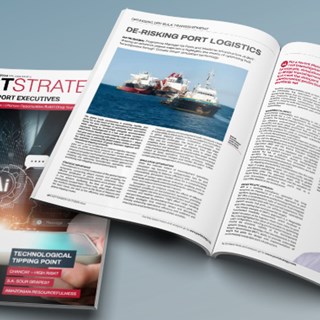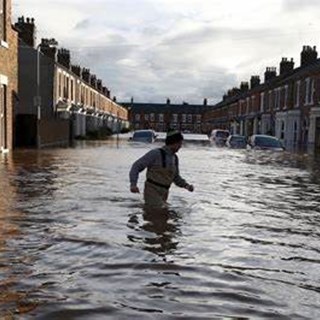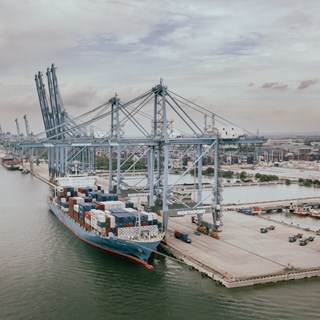
Asset management and the climate emergency
The scale of the climate and environment emergency we face is recognised by most organisations, but how do we tackle the challenge of developing robust action plans in asset management?
15 December 2021
Driven by the exuberant desires and basic needs of society, it is through our assets that we impact the environment, in-turn these assets feel the impact of our rapidly changing environment.
The Climate Emergency, described in the recent IPCC report(1) as a ‘code red’ for humanity, is a profound, and systemic, driver for change in how assets need to be designed, used, managed and disposed of or repurposed. Good Asset Management practices must respond to this driver and develop new ways for our assets to deliver their purpose, with a reduced impact on the environment.
View from the Institute Asset Management The international Institute of Assessment Management (IAM) is a Learned Society promoting the discipline and benefits of asset management. It is a professional body supporting the development of individuals and organisations operating within the profession.
In addressing the Climate Emergency, the IAM has stated that “asset management provides a framework by which to draw together the multitude of disciplines and expertise needs to address these issues within an integrated, pan-organisational model in order to select the best possible solutions to reduce the impact, adapt infrastructure and contribute to protecting our most valuable asset, our ability to survive and thrive on planet Earth.(2)”
As part of the IAM’s Climate Emergency Programme Steering Group, BMT has led the development of new guidance to assist asset owners, operators and service providers to meet these challenges within the context of asset lifecycle delivery(3), incorporating the recently finalised ISO Standards on Climate Change(4).
The recently released white paper, Climate Emergency Action Planning(5), explains how the existing approach to developing and implementing asset management strategies and plans can be enhanced to address the climate challenges and encourages organisations;
The IAM believes that the profession will have a positive impact on addressing the climate emergency and it is vital that organisations share their knowledge, experiences and examples of good practice if this is to be achieved.
Our input to this white paper included sharing our own insight and experience from working with many customers on their journeys towards a sustainable future. A few examples are shown below:
Supporting the Royal Navy
Working to Director Naval Staff (DNS), the Royal Navy Climate Change and Sustainability Champion, we are acting as the Royal Navy Sustainability Programme Manager. We are working to cohere a broad range of ongoing Climate Change and Sustainability activity across the Royal Navy, providing strategic guidance and developing options, and acting as the key interlocutor with the newly established UK Ministry of Defence Climate Change and Sustainability Directorate.
As part of the environmental pillar of sustainability, organisations should understand their compliance obligations, environmental impacts, impacts of climate change on them, opportunities to improve and communication of environmental information to stakeholders.
An Environmental Management System (EMS), integrated with the asset management system provides a systematic approach for employees to act with environmental conscience, and top-level management to make strategic organisational and asset related decisions when balancing environmental governance with socio-economic needs of the organisation.
We are working with NCHQ to identify improvements, aligning to ISO 14001:2015, to their EMS. We are guiding NCHQ Directorates in the identification of environmental aspects, impacts and opportunities for improvement.
Climate Risk Assessment, Carbon-Reduction Planning and Management in Australia
Achieving interim and longer-term targets to reduce carbon emissions will require asset management decision makers to look at a broad range of strategies. In addition to improving fuel, energy, and water efficiency, this will also mean progressive retrofit and replacement of older assets with lower carbon building materials and renewable energy.
We are working with our customers such as the Tasmanian Port Authority (TasPorts) to help set strategic targets for carbon reduction as well as developing policies and practical strategies for implementation. These are key drivers on the overarching asset management objectives and strategies for delivering them.
Combined with assessment of physical risks from future climate hazards such as flooding on port assets, this assessment can be used to inform future planning as well as TCFD-compliant disclosures and other sustainability reporting frameworks.
Creating a Sustainable Maritime Industry
De-carbonisation of the maritime transport industry is an incredibly complex endeavour as it will involve the development and mainstreaming of a range of new technologies, long-lived and expensive assets, coordination with shoreside facilities and a host of international and domestic regulations.
One of the ways that we are supporting vessel owners and operators to understand, assess, and manage this issue is through good practice asset management approaches.
Navigating the regulatory, technological, economic, and environmental complexities can be challenging along with the associated balance between the capital and operational costs of these assets. It is important therefore to look at it in context of a longer-term roadmap to de-carbonisation which is where we can combine its wide asset management experience not only with our deep vessel knowledge but also our wider infrastructure, energy, and environmental knowledge.
An example of this is our work with shipowners such as Isles of Scilly Steamship Company to support them in specifying, designing, building, and operating innovative and more sustainable vessels.
1: www.ipcc.ch (Sixth Assessment Report)
2: Institute of Asset Management (IAM) Climate Emergency Position Statement
3: Lifecycle Delivery is one of the 6 Subject Groups within the IAM’s Conceptual Asset Management model (IAM - Asset Management - An Anatomy (theiam.org))
4: ISO 14090, 14091, 14092
5: Sustainability - Wikipedia

Greg is a Senior Associate at BMT and leads the firm’s global campaign related to climate risk and resilience. Based in Brisbane, Australia, Greg has over 25 years of experience in natural hazard and climate change planning and adaptation studies with planning, transport, and conservation authorities.

John is the professional head of the BMT Defence & Security UK Ltd Asset Management team, comprising over 100 consultants and engineers specialising in fields such as environmental, sustainability, through life engineering, safety, reliability, and technical publications. Based in the UK, John is the Co-Chair of the Institute of Asset Management (IAM) UK Patrons Group, a member of the IAM Council, and a member of the UK Team Defence Information (TDI) Asset Management Community of Practice.

Noel is responsible for growing future business in the commercial maritime sector and has over 20 years’ experience in the industry across both commercial and defence sectors. He joined BMT in 2014 and continues to use his broad technical knowledge and sector experience to deliver technical design and consultancy support to the commercial maritime sector with a focus and passion for the future of shipping.

N/A
The DCN spoke to our climate change risk, resilience and adaptation expert about preparing for the impacts of a changing climate.

N/A
With the UK and beyond facing unprecedented consequences from rising water levels and climate amelioration, BMT are helping our clients in their need for flood alleviation, prediction, mapping and mitigation. James While talks about 5 ways we can assist our clients.

Ian McRobbie
In a Port Strategy feature, Ian McRobbie highlights the merits of optimising bulk transshipment through ‘Climate-Smart’ simulation technology, drawing on extensive project experience

Jaret Fattori - North America
Jaret Fattori's article in Port Strategy discusses how ports are adapting to climate change and IFRS S-2 regulations. Emphasising the shift towards sustainability through digital integration, decarbonisation, and innovative fuel alternatives, he explores the significant role of collaboration in advancing port sustainability and innovation.